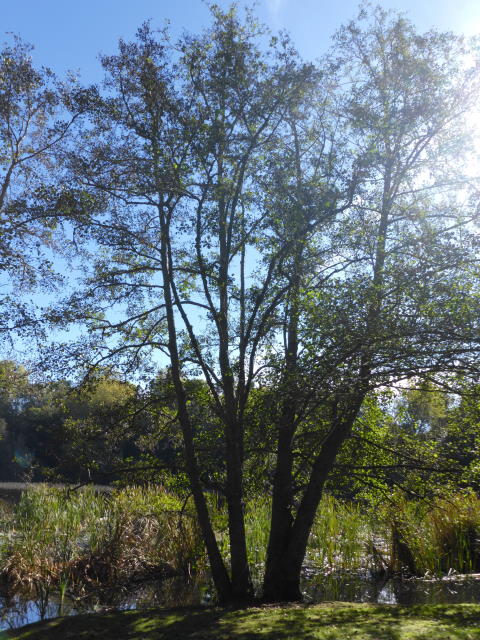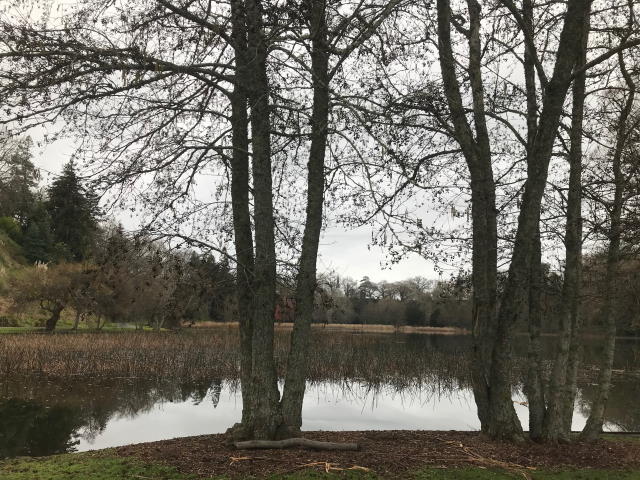European Alder (Alnus glutinosa) 1

Alders, whether from Europe, China or the Americas, are humble trees, often going quite unnoticed, except perhaps in winter when their dark silhouettes, adorned with tiny cones, are outlined at the water’s edge. They are the only broadleaf to have cones, but it is their sticky buds and twigs which earn them the name ‘glutinosa’. In the wild their place is boggy bottoms, and since wooden clogs went out of fashion (if they were ever in fashion) it seems nobody has wanted their timber. Never mind that half of Venice is built on alder piles, and that the city state in large measure owed its mercantile and military might to alders – but more on that next month!
In the Waikato, we see them growing at their best along riverbanks, sometimes reaching up to 30 metres. And there is a very good reason for this. They are unusual as a tree in having a symbiotic relationship with nitrogen-fixing bacteria that live in root nodules, sometimes as large as an apple. In exchange for sugars, these bacteria create nitrogen fertilizer for the tree, enabling it to flourish and invade waterlogged ground. Fallen trunks will rot quite quickly in the presence of air, but if they are submerged the wood is stable. A smaller variety, the cut-leaf black alder (Alnus glutinosa lacniniata) grows to about 10 or 12 metres and can be an attractive garden tree. . [ Around the World in 80 Trees and Hugh Johnson’s International Book of Trees]
European Alder (Alnus glutinosa) 2

Introduced in New Zealand in 1914 for the purpose of river bank stabilisation, alder has become almost a weed species along riparian areas of lakes and rivers, especially in the Waikato. But since the twelfth century this humble tree has literally been the foundation of the city of Venice, structurally, economically and militarily.
In air alder logs rot quickly, but when completely submerged in water they retain their compressive strength for hundreds of years. Venice is built on marshland; after systematically walling off and draining small areas, the city engineers drove alder piles through the mud and into the subsoil, using nine logs for each square metre, with the tops well below the lowest tide. Layers of crushed brick and stone were then poured around the piles and thick larch planks laid on top. While the largest stone buildings needed thicker oak piles, much of Venice, including the Rialto Bridge, was built on alder piles.
But the story does not stop there. Venice subsequently became a great military and mercantile power, thanks largely to the alder. Its timber yields the best quality charcoal for manufacturing superior gunpowder, which could fire cannonballs further and faster, and make grenades more destructive. Furthermore, alder burns with a heat fierce enough to smelt iron for making tools and ship components. By the late fourteenth century the foundry area, or Arsenale, had become the world’s biggest industrial facility, where 16,000 workers produced armed ocean-going vessels at the rate of one a day. Large swathes of forest on the mainland, both oak and alder, were set aside for state use, mapped and controlled by a bureaucracy which supervised the work of lumberjacks, sawyers and raftsmen (who floated the logs to market). [Around the World in 80 Trees]

